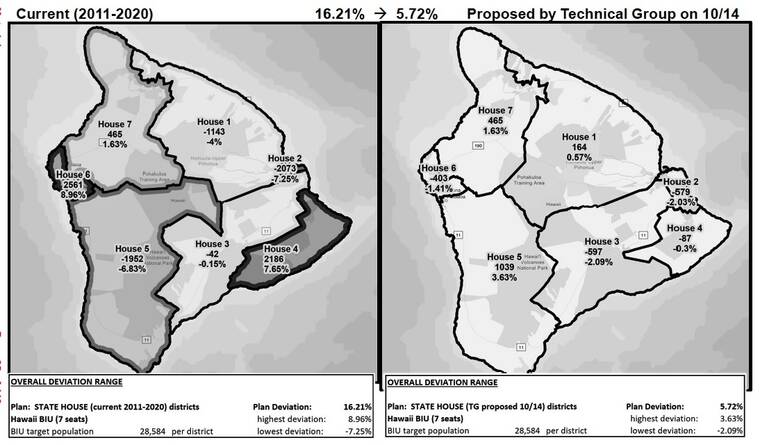The Hawaii County Democratic Party is asking the state Reapportionment Commission to take another look at how nonresident military and students were extracted from population data in light of new figures showing there were almost twice as many military personnel as previously thought.
The number of military removed from counts prior to allocating state legislative districts is especially important to the Big island, which last census received a fourth Senate seat and this year was predicted to earn an eighth House seat because of its population growth.
The discussion about whether Oahu would lose a House seat to the Big Island has been ongoing since reapportionment after the 2010 census resulted in Oahu losing a Senate seat following changes in population and a successful lawsuit by Big Island residents to remove nonresident military families and students from the counts.
“Evidence indicates new (nonresident military) numbers have been given to commission members by the Department of Defense but not released to the public. These latest calculations indicate about 123,000 (nonresident) military residents (active duty service members and dependents) in Hawaii,” said Barbara Dalton, county party chairwoman, in a Nov. 23 letter to the Reapportionment Commission. “This (nonresident military) total is substantially larger than the 64,415 used by the Reapportionment Commission to create reapportioned maps.”
Although Hawaii Island’s average population in each of its House seats is the highest in the state at 28,584 to the statewide average of 27,130, its average population per Senate seat is 50,023 residents compared to the statewide average of 55,344, according to data provided by reapportionment staff. Even if the House population numbers are higher than average, indicating under-representation, the Senate numbers are below average, indicating over-representation.
The number of residents per House district on the Big Island is 5.4% over the norm, while Maui, the only other island unit over the norm, is 1.1%. The other two islands are below average in population average per district, meaning greater representation. Oahu is close to the norm, with a scant 0.4% fewer residents than the norm and Kauai is significantly below, with 10.3% under the norm.
Reapportionment Commissioner Dylan Nonaka said there’s no way to make the numbers more even across all the islands without creating canoe districts, where some representatives represent portions of more than one island. The public has been opposed to that strategy, he said.
Nonaka said the recent numbers provided by the U.S. Pacific Command were a “dump of data” that wasn’t specific to the commission’s criteria.
“The answer you get is dependent on the questions you ask,” Nonaka said Wednesday. “What we’re using is the exact same criteria that we used 10 years ago. … The safest way to avoid a lawsuit or challenge is to use the exact same process we used last time that was upheld by the court.”
Any lawsuits over the reapportionment and redistricting process would probably draw on constitutional rights of equal representation. Any lawsuits wouldn’t happen until maps are official approved by the Reapportionment Commission, which is expected to happen after a series of public hearings this month.
Will there be a lawsuit coming from the Big Island?
“I don’t know,” Dalton said Wednesday. “That’s the $64,000 question.”



